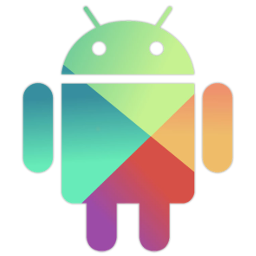Library for in-app purchases (Android In-App Billing v.3)

Checkout (“cash desk”, “cash register”) is a library for making in-app purchases based on Android In-App Billing v.3 . The main goal is to reduce the developer’s time spent on introducing payments into Android applications. The project was inspired by the Volley library , and was designed to be as easy to use, fast and flexible as possible.
▌Preparation
There are several ways to connect a library to a project:
- Download the source code from the github repository and copy it to your project
- For Maven users, use the following dependency:
org.solovyev.android checkout x.x.x - For Gradle users, use the following dependency:
compile 'org.solovyev.android:checkout:x.x.x@aar' - Download the desired archive from the repository
The library requires
com.android.vending.BILLINGpermission. If you connected the library as a dependency (for example, in Maven or Gradle), then nothing else needs to be done. Otherwise, add the following line to AndroidManifest.xml:
▌Use
The library contains 3 main classes: Billing , Checkout and Inventory .
The class
Billingprocesses purchase requests (see IInAppBillingService.aidl methods ) and controls the connection to the Google Play service. This class is best used as a singleton, so that all requests are lined up in the same queue and use the same cache. For example, an application class might look like this:public class MyApplication extends Application {
/**
* For better performance billing class should be used as singleton
*/
@Nonnull
private final Billing billing = new Billing(this, new Billing.Configuration() {
@Nonnull
@Override
public String getPublicKey() {
return "Your public key, don't forget to encrypt it somehow";
}
@Nullable
@Override
public Cache getCache() {
return Billing.newCache();
}
});
/**
* Application wide {@link org.solovyev.android.checkout.Checkout} instance (can be used anywhere in the app).
* This instance contains all available products in the app.
*/
@Nonnull
private final Checkout checkout = Checkout.forApplication(billing, Products.create().add(IN_APP, asList("product")));
@Nonnull
private static MyApplication instance;
public MyApplication() {
instance = this;
}
@Override
public void onCreate() {
super.onCreate();
billing.connect();
}
public static MyApplication get() {
return instance;
}
@Nonnull
public Checkout getCheckout() {
return checkout;
}
//...
}
A class
Billingcan be used to execute queries directly, but more often it is more convenient to use an intermediary - a class Checkout. The latter adds to each request a tag by which the request can be canceled, which can be useful, for example, in Activity. Checkoutallows you to download the current state of purchases through the method Checkout#loadInventory(). Also Checkout, or rather its heir ActivityCheckout, provides access to PurchaseFlow, which in turn carries out the actions necessary for the purchase. The class code Activity, which displays the shopping list, and which allows you to make purchases, is presented below:public class MyActivity extends Activity {
@Nonnull
private final ActivityCheckout checkout = Checkout.forActivity(this, MyApplication.get().getCheckout());
@Nonnull
private Inventory inventory;
@Override
protected void onCreate(Bundle savedInstanceState) {
super.onCreate(savedInstanceState);
checkout.start();
// you only need this if this activity starts purchase process
checkout.createPurchaseFlow(new PurchaseListener());
// you only need this if this activity needs information about purchases/SKUs
inventory = checkout.loadInventory();
inventory.whenLoaded(new InventoryLoadedListener())
}
@Override
protected void onActivityResult(int requestCode, int resultCode, Intent data) {
super.onActivityResult(requestCode, resultCode, data);
checkout.onActivityResult(requestCode, resultCode, data);
}
@Override
protected void onDestroy() {
checkout.stop();
super.onDestroy();
}
//...
}
▌ Source code, examples
The source code is available in my github repository . There you will find the source code of the test application (the application itself can be installed from Google Play ). Everything is licensed under the Apache License, Version 2.0 .
▌ Conclusion
The library has something to work on (for example, there is not enough test coverage, and it would be nice to have a migration procedure from one popular library ). But in general, she can already be used in production, which I do in my Say it right application ! .
Questions and suggestions are welcome in the comments to the article, as well as in the bug tracker on the github.
UPD There is a test application for the library on Google Play. In order to make test payments you need to join this Google+ group.
